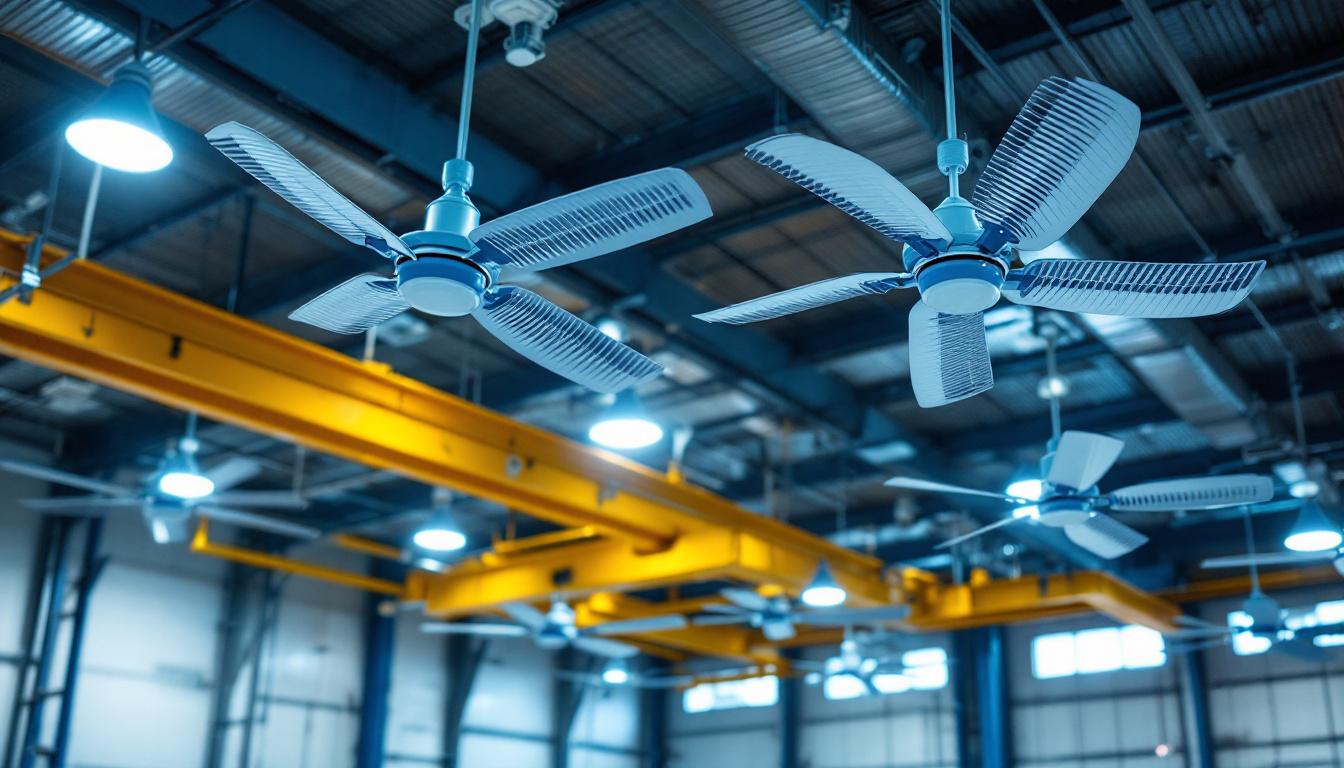
As the demand for energy-efficient lighting solutions continues to grow, compact fluorescent lamps (CFLs) have become a popular choice among both residential and commercial clients. However, the effectiveness of these bulbs heavily relies on the ballast used to regulate their operation. For lighting contractors, understanding how to choose the right CFL bulb ballast is crucial for ensuring optimal performance, longevity, and customer satisfaction. This guide aims to equip contractors with the knowledge needed to make informed decisions when selecting CFL bulb ballasts.
A ballast is an essential component in fluorescent lighting systems, including CFLs. It serves to regulate the current flowing to the bulb, providing the necessary voltage to start the lamp and maintaining a steady current during operation. Without a proper ballast, CFLs can flicker, produce inadequate light, or even fail prematurely.
There are primarily two types of ballasts used with CFL bulbs: magnetic and electronic. Each type has its own unique characteristics and applications.
Magnetic ballasts are traditional and have been used for decades. They are generally more robust and can handle fluctuations in voltage, but they are also bulkier and less energy-efficient compared to their electronic counterparts. On the other hand, electronic ballasts are lighter, more compact, and provide better energy efficiency. They also offer features such as flicker-free operation and improved color rendering.
When selecting a ballast, compatibility with the CFL bulb is paramount. Not all CFLs are designed to work with every ballast. It is crucial to check the manufacturer’s specifications to ensure that the ballast can handle the wattage and type of the CFL being used. Mismatched components can lead to performance issues and may void warranties.
Additionally, understanding the specific requirements of your lighting setup can greatly enhance the performance and lifespan of your CFL bulbs. For instance, some electronic ballasts are designed to work with dimmable CFLs, allowing users to adjust the brightness according to their needs. This feature is particularly useful in settings where ambiance is important, such as in restaurants or living rooms. Furthermore, the installation process can vary significantly between different types of ballasts, with electronic ballasts often requiring less space and simpler wiring, making them a popular choice for modern lighting applications.
It’s also worth noting that advancements in ballast technology continue to emerge, with manufacturers striving to create more efficient and environmentally friendly options. For example, some new electronic ballasts incorporate smart technology that can communicate with home automation systems, allowing for remote control and monitoring of energy usage. This not only helps in reducing electricity bills but also contributes to a more sustainable approach to lighting, aligning with the growing trend of energy conservation in households and businesses alike.
Choosing the right ballast involves evaluating several factors that can impact the performance and efficiency of the lighting system. Understanding these factors will help contractors make informed decisions that align with their clients’ needs.
One of the first considerations when selecting a ballast is its wattage and voltage ratings. CFLs come in various wattages, and the ballast must match these specifications to ensure optimal performance. For instance, a 13-watt CFL will require a ballast rated for 13 watts, while a 23-watt CFL will need a ballast rated accordingly.
Furthermore, the voltage rating is crucial, especially in commercial applications where voltage fluctuations may occur. Ballasts with a higher tolerance for voltage variations can help prevent flickering and extend the lifespan of the CFLs. This is particularly important in environments like warehouses or manufacturing facilities, where lighting is essential for safety and productivity. Additionally, understanding the local electrical standards and codes can guide contractors in selecting the appropriate ballast to ensure compliance and reliability.
Energy efficiency is a significant consideration for many clients, particularly those looking to reduce their energy bills and carbon footprint. Electronic ballasts are typically more energy-efficient than magnetic ones, as they consume less power and provide better light output. When selecting a ballast, contractors should look for models that are ENERGY STAR certified or have similar efficiency ratings.
Moreover, the long-term savings associated with energy-efficient ballasts can be substantial. Not only do they lower electricity costs, but they also reduce the frequency of bulb replacements, which can be a significant expense in large installations. Clients may also appreciate the potential for rebates or incentives offered by utility companies for choosing energy-efficient lighting solutions, further enhancing the financial appeal of these options.
With increasing awareness of environmental issues, many clients prefer lighting solutions that have a minimal ecological footprint. CFLs are already more energy-efficient than traditional incandescent bulbs, but the choice of ballast can further enhance their sustainability. Electronic ballasts, for instance, produce less waste heat and can help reduce greenhouse gas emissions when used in conjunction with CFLs.
Additionally, the materials used in the construction of ballasts can also play a role in their environmental impact. Contractors should consider ballasts made from recyclable materials or those that adhere to stringent environmental regulations. This not only aligns with the growing trend of sustainable building practices but also appeals to eco-conscious clients who are increasingly seeking out products that contribute to a healthier planet. By prioritizing environmentally friendly options, contractors can position themselves as leaders in sustainable lighting solutions, attracting a broader clientele who value corporate responsibility.
The installation process of CFL ballasts can vary based on the type of ballast and the specific lighting application. Understanding these considerations is essential for ensuring a successful installation.
Ballasts can come in different mounting configurations, including surface-mounted or recessed options. The choice of mounting will depend on the specific lighting application and the design of the space. Contractors should assess the installation site to determine the most suitable mounting option that allows for easy access and maintenance. Additionally, it is important to consider the aesthetic impact of the mounting choice; for instance, recessed ballasts can provide a sleek, unobtrusive look that complements modern interior designs, while surface-mounted options may be more appropriate for industrial settings where functionality takes precedence over aesthetics.
Proper wiring and connections are vital for the successful operation of CFL ballasts. Contractors must ensure that the wiring is compatible with the ballast and that all connections are secure. Loose connections can lead to flickering lights, reduced efficiency, and even potential hazards. It is advisable to follow the manufacturer’s wiring diagrams and guidelines during installation. Furthermore, using the right gauge of wire is crucial; undersized wires can overheat and create a fire risk, while oversized wires may be cumbersome and difficult to manage. Additionally, incorporating wire nuts or terminal blocks can enhance connection security and simplify future maintenance or upgrades.
When installing CFL ballasts, it is also important to consider the environmental factors that may affect their performance. For example, extreme temperatures can impact the efficiency and lifespan of the ballast. Installing ballasts in areas with high humidity or exposure to moisture may require additional protective measures, such as using weatherproof enclosures or selecting ballasts specifically designed for damp locations. Moreover, energy efficiency ratings should be taken into account, as choosing high-efficiency ballasts can significantly reduce energy consumption and lower utility bills over time. This not only benefits the environment but also aligns with many building codes and sustainability initiatives.
Once installed, CFL ballasts require minimal maintenance; however, periodic checks can help ensure long-term performance. Understanding common issues and troubleshooting methods can save contractors time and improve customer satisfaction.
Ballast failure can manifest in various ways, including flickering lights, dim output, or complete failure to start. If a CFL is not functioning correctly, it is essential to diagnose whether the issue lies with the bulb or the ballast. Contractors should inspect the ballast for any visible signs of damage, such as burn marks or corrosion.
When a ballast fails, replacing it is often the best course of action. Contractors should ensure they select a compatible replacement that meets the specifications of the existing CFLs. It is also an opportunity to upgrade to a more efficient ballast if the original was a magnetic type.
Cost is always a factor when selecting lighting components, and ballasts are no exception. While electronic ballasts tend to be more expensive upfront, their energy efficiency can lead to significant savings over time.
Contractors must weigh the initial investment in a quality ballast against the potential long-term savings in energy costs. Clients may be more receptive to investing in higher-quality electronic ballasts if they understand the benefits of reduced energy consumption and lower maintenance costs.
When budgeting for a lighting project, it is crucial to factor in the cost of ballasts, including potential replacements. Contractors should communicate openly with clients about the importance of selecting high-quality components to avoid unexpected expenses in the future.
Choosing the right CFL bulb ballast is a critical aspect of ensuring the performance and efficiency of lighting systems. By understanding the various types of ballasts, considering key factors such as wattage, energy efficiency, and environmental impact, and being mindful of installation and maintenance, lighting contractors can make informed decisions that benefit both their clients and their business.
As the lighting industry continues to evolve, staying informed about the latest technologies and best practices will be essential for contractors looking to provide top-notch service. By prioritizing quality and compatibility, contractors can enhance their reputation and ensure customer satisfaction in an increasingly competitive market.
Ready to elevate your lighting projects with the right CFL bulb ballasts? Look no further than LumenWholesale, where we offer an exceptional range of high-quality, spec-grade lighting products at the best wholesale prices. Say goodbye to inflated markups and hello to superior performance and reliability for all your lighting needs. With our commitment to quality, affordability, and convenience, you can trust that you’re getting the best value with every purchase. Plus, enjoy the ease of bulk buying with free shipping, ensuring you have the premium lighting you need without any hidden fees. Make the smart choice for your business and explore our wholesale lighting options today.

Discover why hanging shop lights are a crucial component for lighting contractors.

Discover innovative cost-saving strategies for lighting contractors with linear lights that can be cut to size.

Discover the top strategies lighting contractors use to integrate industrial big ceiling fans into their projects.

Discover how canned light technology is revolutionizing the lighting industry, offering contractors a competitive edge with its efficiency, versatility, and modern appeal.